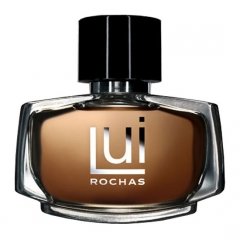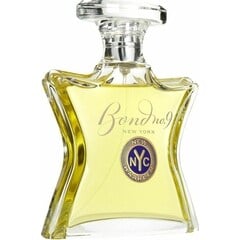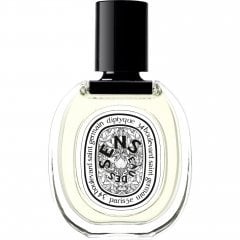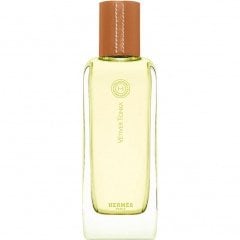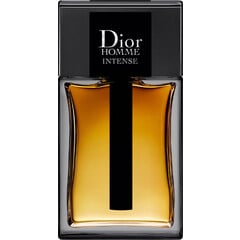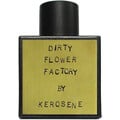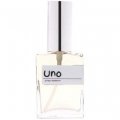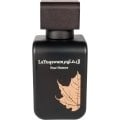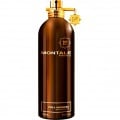
RhythmnHues
Reviews
Filter & sort
Woody-Amber Fougere
With a Linalool rich top and Coumarin in the base, this feels more like a (woody-amber) Fougere than a Chypre.
The backbone is definitely made of Iso-E-Super & Vertofix. The woody aspect of this perfume starts right at the top with woody-citruses like Mandarin/Tangerine and Petitgrain. Some Lemon to lift the whole citrus accord up a notch. The heart is mostly white flowers - Neroli and Muguet(lily of the valley) with some Rose accents and maybe a touch of Ionones (orris/violets/woody-floral) to bridge the florals to the woody base. I do not detect a prominent Hedione note which is used quite commonly in most perfumes to provide diffusion - I feel the Muguet materials and the IsoESuper + Vertofix do most for the diffusive nature of this one.
Hints of Sandalwood introduce the base with a soft, creamy, woody tone complemented with sweetness from Coumarin (the bison grass/sweet grass note listed in the pyramid) and Vanillin. The Patchouli with the Labdanum (and possibly Benzoin) make the base a lot darker, and earthier than the top & heart of the perfume. Cedarwood gives the whole Woody accord some freshness, a slightly rough edge, and some possible added powder-y-ness. And finally, maybe, some clean, white, linen like Musks to fix it to the skin and provide some extra diffusion in the base.
This definitely feels like a modernized take on Guerlain's Habit Rouge (hence Shalimar). Citruses>White Flowers>Woods>Vanilla&Patchouli. And since it's nowhere as nuclear as Habit Rouge, it wears much easier.
Absolutely beautiful perfume. But definitely not worth the prices quoted on eBay.
8.5/10
The backbone is definitely made of Iso-E-Super & Vertofix. The woody aspect of this perfume starts right at the top with woody-citruses like Mandarin/Tangerine and Petitgrain. Some Lemon to lift the whole citrus accord up a notch. The heart is mostly white flowers - Neroli and Muguet(lily of the valley) with some Rose accents and maybe a touch of Ionones (orris/violets/woody-floral) to bridge the florals to the woody base. I do not detect a prominent Hedione note which is used quite commonly in most perfumes to provide diffusion - I feel the Muguet materials and the IsoESuper + Vertofix do most for the diffusive nature of this one.
Hints of Sandalwood introduce the base with a soft, creamy, woody tone complemented with sweetness from Coumarin (the bison grass/sweet grass note listed in the pyramid) and Vanillin. The Patchouli with the Labdanum (and possibly Benzoin) make the base a lot darker, and earthier than the top & heart of the perfume. Cedarwood gives the whole Woody accord some freshness, a slightly rough edge, and some possible added powder-y-ness. And finally, maybe, some clean, white, linen like Musks to fix it to the skin and provide some extra diffusion in the base.
This definitely feels like a modernized take on Guerlain's Habit Rouge (hence Shalimar). Citruses>White Flowers>Woods>Vanilla&Patchouli. And since it's nowhere as nuclear as Habit Rouge, it wears much easier.
Absolutely beautiful perfume. But definitely not worth the prices quoted on eBay.
8.5/10
#Rehashed exclusivity
When Jean-Francois Laporte founded L'artisan Parfumeur, in the late 70s (and Maître Parfumeur et Gantier, in the 80s) I'm very sure his vision for what we now call 'Niche' was nowhere close to what it has become now. Quite antithetical actually, according to me. Laporte's idea was to break free of the constraints of mainstream nonsense of following silly fashion trends and keeping it safe (and boring). He wanted to give his perfumers a free hand at developing new radical ideas without any restrictions or concerns of the mass market. The perfumer called the shots, so to speak, not the audience or some designer. Their audience was intended to be small, not to indicate any kind of elitist-snobbish-exclusivity - but it was mainly for serious frag-heads of sorts. The kind of people who obsessively dug deep into perfumes, like art, and were curious to see if there were more creative possibilities in this field. And since the end product usually included high quality raw materials and creative concepts they were priced a little higher than mainstream designer perfumes, but not as obnoxiously high as exclusive houses, like say Creed. Fast-forward to the 90s and the Niche folk are now exclusive and (rather shamelessly) following trends of the mainstream. Bond No. 9 was practically leading that pack. Releasing dozens of fashionable rehashed ideas right down to Cool Water-clones and what-not, with the stupidly exorbitant exclusive range price-tags to boot.
I think it sort of (almost directly) speaks of our society. We prefer exclusivity over creativity? We want to be able to brag more than experience something new or different. Which certainly explains the success of brands like Creed, Tom Ford, Roja Dove, Clive Christian etc. These brands have almost exclusively been rehashing classics with minor tweaks, sometimes with much richer raw materials (Roja Dove). But there is nothing 'niche' or 'creative' about their works. They're just selling exclusivity. Elitist-snobbery value.
Take the case at hand. New Haarlem. Bond No. 9. - Maurice Roucel had already executed this concept, quite stunningly, for Rochas in 1999. And Rochas Man, to me, is superlative in all aspects when compared to this. A perfumer re-visiting an old concept is not new but to do so for a 'niche' house and not make any significantly creative changes to it is kinda meh. I should mention I'm a fan of Maurice Roucel and a huge admirer of so many great works he has created over the years - so this is not to put down Roucel in any way. But it does feel like a letdown. This feels like they took Rochas Man, sent him to the gym and introduced him to steroids. Very thick. loud, and characterless. Very D'uh! Now if that happened to be a Rochas flanker or by some house in the Middle East that "customizes clones for discerning customers" it'd not have been an issue as such. In fact Rochas did offer an Intense flanker of Rochas Man and that too was really good. But to pay this kind of money for a shallow variation on an old theme is just plain wrong. As a community of individuals who spend so much of their money on fragrances I think we need to be questioning ourselves & the industry very seriously. Especially if we even share a part of the passion & vision that Jean-Francois Laporte had for perfumery.
5/10
P.s: Apologies since this seems more like a rant than a review.
I think it sort of (almost directly) speaks of our society. We prefer exclusivity over creativity? We want to be able to brag more than experience something new or different. Which certainly explains the success of brands like Creed, Tom Ford, Roja Dove, Clive Christian etc. These brands have almost exclusively been rehashing classics with minor tweaks, sometimes with much richer raw materials (Roja Dove). But there is nothing 'niche' or 'creative' about their works. They're just selling exclusivity. Elitist-snobbery value.
Take the case at hand. New Haarlem. Bond No. 9. - Maurice Roucel had already executed this concept, quite stunningly, for Rochas in 1999. And Rochas Man, to me, is superlative in all aspects when compared to this. A perfumer re-visiting an old concept is not new but to do so for a 'niche' house and not make any significantly creative changes to it is kinda meh. I should mention I'm a fan of Maurice Roucel and a huge admirer of so many great works he has created over the years - so this is not to put down Roucel in any way. But it does feel like a letdown. This feels like they took Rochas Man, sent him to the gym and introduced him to steroids. Very thick. loud, and characterless. Very D'uh! Now if that happened to be a Rochas flanker or by some house in the Middle East that "customizes clones for discerning customers" it'd not have been an issue as such. In fact Rochas did offer an Intense flanker of Rochas Man and that too was really good. But to pay this kind of money for a shallow variation on an old theme is just plain wrong. As a community of individuals who spend so much of their money on fragrances I think we need to be questioning ourselves & the industry very seriously. Especially if we even share a part of the passion & vision that Jean-Francois Laporte had for perfumery.
5/10
P.s: Apologies since this seems more like a rant than a review.
1 Comment
A bitter-orange tree blooming in the garden
I'm not familiar with Olivier Pescheux's works but this perfume has to be one of his best to date. It's simply superlative! The concept here was apparently to present a full bigarade-orange tree in a garden. And this presentation is pure genius.
Citruses are difficult to work with. They've been (over)used in modern perfumery for so long now that every facet has been discovered over time and it's incredibly difficult to get any more beyond a point. So lots of perfumers these days look to other ingredients to bring out deeper or hidden facets of citruses, while trying to steer away from cliched ideas. Also adding to their woes is the fact that citrus accords are usually very short lived, hence used almost exclusively as top-notes in perfumes. Mr. Pescheux tackles these issues rather skillfully with his intelligent choice of ingredients. It's rather simple. A big dose of floral Neroli & Orange Blossom - Bitter Orange for a full bouquet of citrus aromas blended beautifully with bright, peppery, bracing juniper berries - sweet, floral and green angelica - a woody, sweet, earthy patchouli accord. Given a full-wearing this is very evocative of a blooming orange tree in a garden. I can smell the green, bitter leaves, slightly-bitter but juicy fruit, the meditative, wispy, powdery-white flowers, the soft woody smell of the bark of the tree, the damp earth beneath it. It's quite an experience.
Highly recommended if you like citrus-aromatics but with woody/floral facets. I wear it by itself mostly, but sometimes I do like to layer it with some other linear fragrances for some extra zest. Like yesterday, I layered this over Tam Dao and it was glorious! Projects big and lasts a very long time on me too - which makes it even more interesting for a citrus fragrance. Top notch stuff!
9/10
Citruses are difficult to work with. They've been (over)used in modern perfumery for so long now that every facet has been discovered over time and it's incredibly difficult to get any more beyond a point. So lots of perfumers these days look to other ingredients to bring out deeper or hidden facets of citruses, while trying to steer away from cliched ideas. Also adding to their woes is the fact that citrus accords are usually very short lived, hence used almost exclusively as top-notes in perfumes. Mr. Pescheux tackles these issues rather skillfully with his intelligent choice of ingredients. It's rather simple. A big dose of floral Neroli & Orange Blossom - Bitter Orange for a full bouquet of citrus aromas blended beautifully with bright, peppery, bracing juniper berries - sweet, floral and green angelica - a woody, sweet, earthy patchouli accord. Given a full-wearing this is very evocative of a blooming orange tree in a garden. I can smell the green, bitter leaves, slightly-bitter but juicy fruit, the meditative, wispy, powdery-white flowers, the soft woody smell of the bark of the tree, the damp earth beneath it. It's quite an experience.
Highly recommended if you like citrus-aromatics but with woody/floral facets. I wear it by itself mostly, but sometimes I do like to layer it with some other linear fragrances for some extra zest. Like yesterday, I layered this over Tam Dao and it was glorious! Projects big and lasts a very long time on me too - which makes it even more interesting for a citrus fragrance. Top notch stuff!
9/10
2 Comments
The Different Vetiver
First things first - Hats off to Jean-Claude Ellena! I believe no one else could've done this. He is undoubtedly one of greatest contemporary perfumers and also one of my personal favourites of all time. If one could perceive perfumery as music - for the nose, then JC Ellena could be likened to a contemporary composer mainly influenced by impressionist masters like Debussy & Ravel but with strong shades of late romanticism from Schubert, Schumann and Brahms. He takes his main motif/idea and juxtaposes it with some dissonant contrasts while keeping it very minimal and transparent all the time. But at the same time he embellishes each stage of the movement in a very romantic manner choosing very traditional, pleasing, consonant harmonic ornamentation. One can see this across his compositions, especially for the house of Hermes. (I think he probably got the most freedom from this house in terms exploring of his own creativity.) And I think Vetiver Tonka is, arguably, his pièce de résistance.
Vetiver is a grass native to India but is also found in abundance across Haiti, Indonesia, China, Java, and Reunion. The oil extracted from its roots has a distinctively complex scent ranging from wood shavings, wet earth, fresh green grass, roots to ink, licorice, nutty-roasted sugar, and cold-humid air - depending on it's origin. So a perfumer is to not only know what material to use but know each strain of that material intimately well to know what works best for the brief at hand. For instance, in my opinion, the vetiver used here is Bourbon vetiver (Reunion, Madagascar etc) which has more of the nutty, chocolate-y facets. Using Haitian vetiver or another kind would've taken this composition to a completely different place. Ellena takes this main motif of Vetiver & Tonka and gives it a form going from nutty (hazelnuts) to caramel-y/cacoa (praline) to an almost burnt sugar accord. And embellishing this main idea is a touch of flowers (Muguet) in the heart and some soft woods (Sandalwood and cedar probably) in the base just to balance the composition from getting overwhelming. And a dash of tobacco for some contrast and probably to accentuate the dry hay-like facets of tonka beans. Utterly fascinating! It's light, airy, sweet and extremely pleasant to wear. Quite a unique take on this multi-faceted root. Highly recommended if you are open to a different vetiver.
9/10
Vetiver is a grass native to India but is also found in abundance across Haiti, Indonesia, China, Java, and Reunion. The oil extracted from its roots has a distinctively complex scent ranging from wood shavings, wet earth, fresh green grass, roots to ink, licorice, nutty-roasted sugar, and cold-humid air - depending on it's origin. So a perfumer is to not only know what material to use but know each strain of that material intimately well to know what works best for the brief at hand. For instance, in my opinion, the vetiver used here is Bourbon vetiver (Reunion, Madagascar etc) which has more of the nutty, chocolate-y facets. Using Haitian vetiver or another kind would've taken this composition to a completely different place. Ellena takes this main motif of Vetiver & Tonka and gives it a form going from nutty (hazelnuts) to caramel-y/cacoa (praline) to an almost burnt sugar accord. And embellishing this main idea is a touch of flowers (Muguet) in the heart and some soft woods (Sandalwood and cedar probably) in the base just to balance the composition from getting overwhelming. And a dash of tobacco for some contrast and probably to accentuate the dry hay-like facets of tonka beans. Utterly fascinating! It's light, airy, sweet and extremely pleasant to wear. Quite a unique take on this multi-faceted root. Highly recommended if you are open to a different vetiver.
9/10
1 Comment
Dang!
Something else!
Such a breath of fresh air in a world filled with citruses and ouds. A powdery-floral for men. Sigh. Worth all the hype, for me. Dang!
But something I must mention is the reformulation thing. I normally don't buy too much into it but in this case it was very strange. I first had a 2015 bottle which had a very pronounced cocao and ambrette seed accord. The iris and leather were present but very subtle. It was glorious. After I ran out of that one I recently bought a 2014 bottle. Extremely different. The cocao and ambrette arrives much later in the drydown and is much softer here. The main players are iris and leather. Thick, waxy orris root, nutty ambrette almost like hazelnut and suede. With a deep musky, woody base, not generic ISO E super type wood.
But either way I totally like them. I preferred the 2015 version a little more probably. Performance wise these are all quite something. Perfect projection and sillage with outstanding longevity. Definitely try if it intrigues you.
9/10
Such a breath of fresh air in a world filled with citruses and ouds. A powdery-floral for men. Sigh. Worth all the hype, for me. Dang!
But something I must mention is the reformulation thing. I normally don't buy too much into it but in this case it was very strange. I first had a 2015 bottle which had a very pronounced cocao and ambrette seed accord. The iris and leather were present but very subtle. It was glorious. After I ran out of that one I recently bought a 2014 bottle. Extremely different. The cocao and ambrette arrives much later in the drydown and is much softer here. The main players are iris and leather. Thick, waxy orris root, nutty ambrette almost like hazelnut and suede. With a deep musky, woody base, not generic ISO E super type wood.
But either way I totally like them. I preferred the 2015 version a little more probably. Performance wise these are all quite something. Perfect projection and sillage with outstanding longevity. Definitely try if it intrigues you.
9/10

 RhythmnHues
RhythmnHues